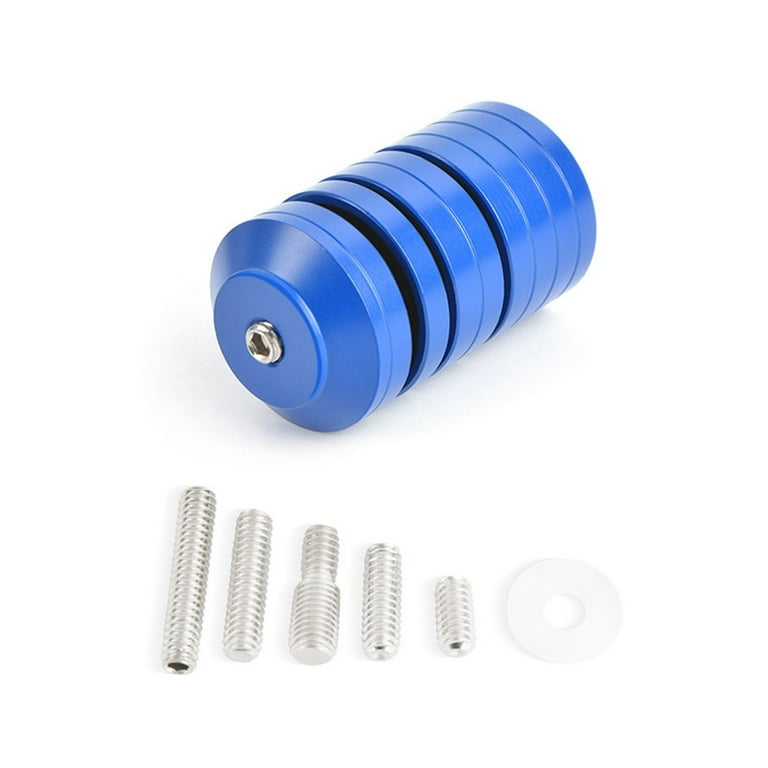Optimize Your Archery Precision With These Bow Stabilizer Techniques
One critical component that can dramatically influence your efficiency is the appropriate usage of bow stabilizers. Whether you are an experienced archer looking to refine your abilities or a novice anxious to improve your accuracy, mastering these bow stabilizer strategies might be the secret to hitting your mark with unrivaled uniformity.
Advantages of Utilizing Bow Stabilizers
Utilizing bow stabilizers can considerably boost an archer's accuracy and overall performance by minimizing bow torque and vibration. Additionally, bow stabilizers moisten resonance, which not only boosts the comfort of shooting yet likewise prevents the bow from leaping upon launch, thus helping in maintaining appropriate purpose.
Moreover, bow stabilizers can aid in holding the bow stable, specifically during windy problems or when shooting from longer distances. The added weight at the front of the bow supplies security and balance, enabling the archer to concentrate on intending without the interruption of bow activity. Overall, the benefits of utilizing bow stabilizers expand past just accuracy, improving the archer's experience and efficiency in numerous shooting scenarios.
Selecting the Right Bow Stabilizer
Choosing the proper bow stabilizer is vital for enhancing your archery devices and boosting shooting efficiency. Larger stabilizers can assist decrease bow torque and absorb more resonance, leading to a steadier goal.

Finally, consider the style of the stabilizer. Some stabilizers feature adjustable weights or dampeners that enable you to tailor the balance and feel of your bow. Inevitably, choosing the appropriate bow stabilizer involves discovering an equilibrium between weight, material, style, and size to improve your capturing accuracy and overall efficiency.
Correct Installation Techniques
To make sure ideal efficiency and safety and security in archery, understanding correct installment strategies for your bow stabilizer is essential. The first action in installing a bow stabilizer is to identify the correct placement on your bow.
Following, securely attach the stabilizer to the bow making use of the proper installing hardware. Some stabilizers come with adjustable weights that can be included or eliminated to fine-tune the equilibrium of your bow.

Changing Stabilizer Weight and Size
After making certain the appropriate setup of your bow stabilizer, the next action includes adjusting the weight and size to maximize its efficiency in improving archery precision. The weight of the stabilizer plays a critical duty in minimizing bow movement during the shot cycle.
When it comes to stabilizer length, finding the ideal balance is key. A longer stabilizer can provide greater security by raising the range between the bow and the weight at the end of the stabilizer. This added distance boosts the maintaining impact, especially in gusty conditions or when shooting at longer distances. Alternatively, a much shorter stabilizer uses a lot more maneuverability and may be favored by archers that value agility and quick activities during capturing.
Advanced Stabilizer Tuning Tips
Achieving optimum bow stability and precision in archery requires a nuanced method to innovative stabilizer tuning. Advanced stabilizer tuning includes fine-tuning various parts to enhance the bow's equilibrium, decrease resonance, and site web enhance total accuracy. One vital method is to experiment with various stabilizer configurations, consisting of side-bar and back-bar arrangements, to discover the ideal balance in between security and maneuverability for your capturing design. bow stabilizer. Furthermore, readjusting the angle and positioning of the stabilizer can have a considerable influence on exactly how the bow responds upon release.
One more vital element of innovative stabilizer adjusting is enhancing the damping residential properties of the stabilizer system. Discovering various products for the site web stabilizer building, such as carbon fiber or aluminum, can also influence the bow's efficiency by changing its weight distribution and stiffness.
Conclusion
In conclusion, optimizing archery precision can be accomplished through the correct option, setup, and modification of bow stabilizers. By understanding the benefits of making use of stabilizers, selecting the best one, and fine-tuning its weight and size, archers can improve their shooting accuracy. Utilizing sophisticated adjusting methods can even more improve security and consistency in arrowhead trip. On the whole, including bow stabilizers into archery practice can bring about enhanced performance and boosted accuracy.
Utilizing bow stabilizers can considerably boost an archer's accuracy and general efficiency by lessening bow torque and resonance. Longer stabilizers provide higher stability and balance, specifically for long-distance shooting, while much shorter stabilizers supply more convenience and are simpler to steer in tight areas (bow stabilizer). Carbon fiber stabilizers are light-weight and resilient, while aluminum stabilizers are robust and supply excellent vibration moistening
A Our site longer stabilizer can offer better stability by enhancing the range in between the bow and the weight at the end of the stabilizer.Another vital facet of sophisticated stabilizer tuning is optimizing the damping residential or commercial properties of the stabilizer system.